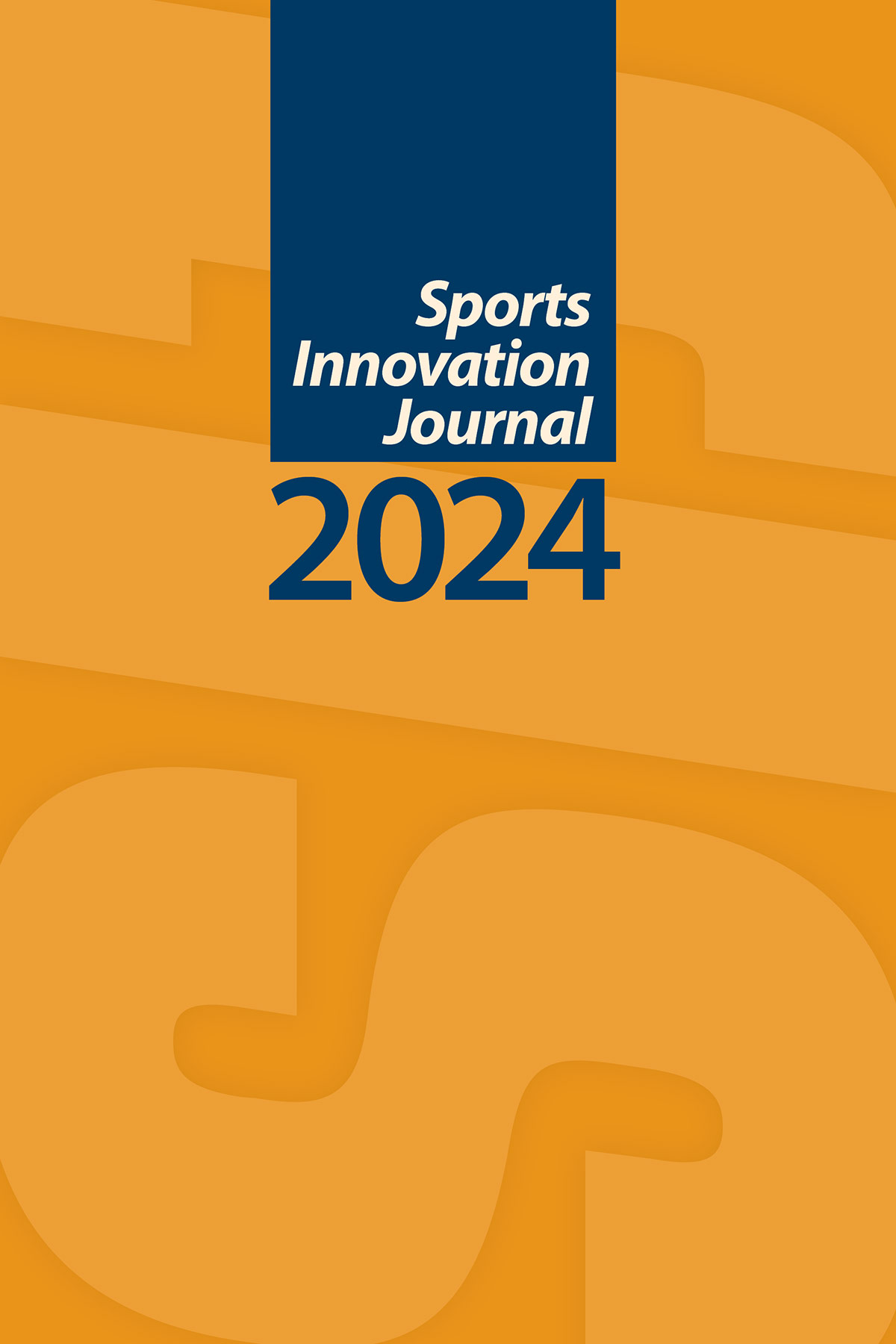The Effect of Rivalry on Sport Performance
A Case Study of Cristiano Ronaldo and Lionel Messi
DOI:
https://doi.org/10.18060/27691Keywords:
rivalry, soccer, goals, assists, statistics, performanceAbstract
The motivation to outperform rivals can lead to sport innovation, creativity, and improved performance. Sport literature already affirms that rivalry leads to better team performance; however, empirical evidence to support the claim for individual performance is scarce. This study examines the effect of the Cristiano Ronaldo-Lionel Messi rivalry on their performances during their stay in Europe. We measured performance using non-subjective metrics such as number of goals, appearances, and assists. We also controlled for their years of professional experience as this is expected to be reflected in their performances. Data were analyzed using multivariate analysis of covariance. Empirical results confirmed the positive effect of rivalry on their average performances, and this effect size was similar. We also found evidence that years of experience did not significantly affect Messi’s performance. The study concludes that individual rivalry has a significant positive effect on performance of athletes.
References
Arai, A., Ko, Y. J., and Ross, S. (2014). Branding athletes: Exploration and conceptualization of athlete brand image. Sport Management Review, 17(2), 97-106.
Chatfield, C. and Collins, J. (1980). Introduction to multivariate analysis, Chapman and Hall.
Church, R. M. (1962). The effects of competition on reaction time and palmar skin conductance. The Journal of Abnormal and Social Psychology, 65(1), 32-40. doi.org/10.1037/h0041901
Cobbs, J., Sparks, B. D. and Tyler, B. D. (2017). Comparing Rivalry Effects Across Professional Sports:National Football League Fans Exhibit Most Animosity. Sport Marketing Quarterly, 26 (4), 235-246.
Conde, E. F. Q., Lucena, A. O. de S., da Silva, R. M., Filgueiras, A., Lameira, A. P., Torro-Alves, N., … Machado-Pinheiro, W. (2018). Hemispheric specialization for processing soccer related pictures: The role of supporter fanaticism. Psychology & Neuroscience, 11(4), 329–341. https://doi.org/10.1037/pne0000147
Converse, B. A. and Reinhard, D. A. (2016). On rivalry and goal pursuit: Shared competitive history, legacy concerns, and strategy selection. Journal of Personality and Social Psychology, 110(2), 191-213. https://doi.org/10.1037/pspa0000038
Dalakas, V. and Levin, A. M. (2005). The balance theory domino: How sponsorships may elicit negative consumer attitudes. ACR North American Advances, 91-97.
Deci, E. L., Betley, G., Kahle, J., Abrams, L. and Porac, J. (1981). When Trying to Win: Competition and Intrinsic Motivation. Personality and Social Psychology Bulletin, 7(1), 79–83. doi.org/10.1177/014616728171012
García-del-Barrio, P., Becerra-Flores, N., and Schröder-Aubert, J. (2019). Rivalries in sports competitions and in the global media showcase. Journal of Sports Economics & Management, 9(3), 185-201.
Halgin, D. S., Borgatti, S. P. and Huang, Z. (2020). Prismatic effects of negative ties. Social Networks, 60, 26–33. doi.org/https://doi.org/10.1016/j.socnet.2019.07.004
Hambrick, D. C. (1995). Fragmentation and the other problems CEOs have with their top management teams. California Management Review, 37(3), 110–127. https://doi.org/10.2307/41165801
Havard, C. T., Gray, D. P., Gould, J., Sharp, L. A. and Schaffer, J. J. (2013). Development and validation of the sport rivalry fan perception scale (SRFPS). Journal of Sport Behavior, 36(1), 45-65.
Karanfil, F. (2017). An empirical analysis of European football rivalries based on on-field performances. Sport Management Review, 20(5), 468–482. doi.org/10.1016/j.smr.2016.12.003
Kilduff, G., Elfenbein, H. and Staw, B. (2010). The psychology of rivalry: A relationally dependent analysis of competition. In Academy of Management Journal, 53(5), 943-969. doi.org/10.5465/amj.2010.54533171
Kilduff, G. J. (2014). Driven to Win: Rivalry, Motivation, and Performance. Social Psychological and Personality Science, 5(8), 944–952. doi.org/10.1177/1948550614539770
Kilduff, G. J., Galinsky, A. D., Gallo, E. and James Reade, J. (2016). Whatever it takes to win: Rivalry increases unethical behavior. Academy of Management Journal, 59(5), 1508–1534. https://doi.org/10.5465/amj.2014.0545
Loyola, K. (2021). “G.O.A.T. Index: A math professor uses equation to determine the top 10 best soccer player of all time”. BOLAVIP.
Maylon, E. (2023). “Cristiano Ronaldo doesn’t work harder than Lionel Messi, claims Carlos Tevez”. www.mirror.co.uk/sport/football/news/cristiano-ronaldo-doesnt-work-harder-7654124
Messner, F. (2022). Messi vs. Ronaldo: How rivalry influences the image of successful athlete brands. M.Sc. Thesis, Universitat Innsbruck.
Milstein, N., Striet, Y. and Gordon, I. (2022). Rivalry and Performance: A Systematic Review and Meta-Analysis. Organizational Psychology Review, 12(3). doi.org/10.1177/20413866221082128
Mulvey, P. W. and Ribbens, B. A. (1999). The effects of intergroup competition and assigned group goals on group efficacy and group effectiveness. Small Group Research, 30(6), 651–677. doi.org/10.1177/104649649903000601
Nickell, S. J. (1996). Competition and corporate performance. Journal of Political Economy, 104(4), 724–746. doi.org/10.1108/IJSMS-01-2019-0010
Nolan, R. (2012). “Ronaldo vs. Messi: 5 ways you can’t compare the players” Bleacher report.
Otoiu, C., Ratiu, L. and Rus, C. L. (2019). Rivals When We Work Together: Team Rivalry Effects on Performance in Collaborative Learning Groups. Administrative Sciences, 9(61). doi.10.3390/admsci9030061
Palmer, B. (2013). How much is a sports rivalry worth? Slate. http://www.slate.com/articles/business/rivalries/2013/08/sports_rivalries_the_economics_of_crosstown_hatred.html
Pike, B. E., Kilduff, G. J. and Galinsky, A. D. (2018). The Long Shadow of Rivalry: Rivalry Motivates Performance Today and Tomorrow. Psychological Science, 29(5), 804-813. https://doi.org/10.1177/0956797617744796
PTI (2020). “Lionel Mess ‘made me a better player, admits Cristiano Ronaldo”. www.hindustantimes.com/football/messi-made-me-better-player-admits-cristiano-ronaldo/story-hGsnwpxHFbMQwO7BWLvRGI.html
Rencher, A. (1998). Multivariate Statistical Inference and Applications, New York, Wiley.
Schlachter, T. and Cotovio, V.(2023). “Cristiano Ronaldo says his long-standing ‘rivalry’ with Lionel Messi is over”. September 7, 2023. CNN.
Triplett, N. (1898). The dynamogenic factors in pacemaking and competition. The American Journal of Psychology, 9(4), 507-533.
Tyler, B. D. and Cobbs, J. B. (2015). Rival conceptions of rivalry: Why some competitions mean more than others. European Sport Management Quarterly, 15(2), 227–248. https://doi.org/10.1080/16184742.2015.1010558
Tyler, B. D. and Cobbs, J. (2017). All Rivals Are Not Equal: Clarifying Misrepresentations and Discerning Three Core Properties of Rivalry. Journal of Sport Management, 31(1), 1-14.
Watkins, G. (2013). Promoting Rivalry for Innovation’s Sake. https://www.workinfo.org/index.php/articles/item/657-promoting-rivalry-for-innovation-s-sake
Downloads
Published
Issue
Section
License
Copyright (c) 2024 Idowu Ayodeji, Oluwafemi Abiodun

This work is licensed under a Creative Commons Attribution 4.0 International License.
Copyright to articles published in Sport Innovation Journal is retained by the author(s).


